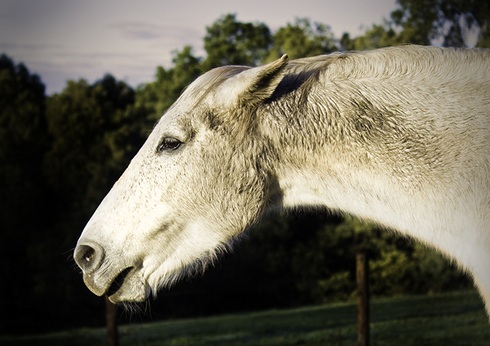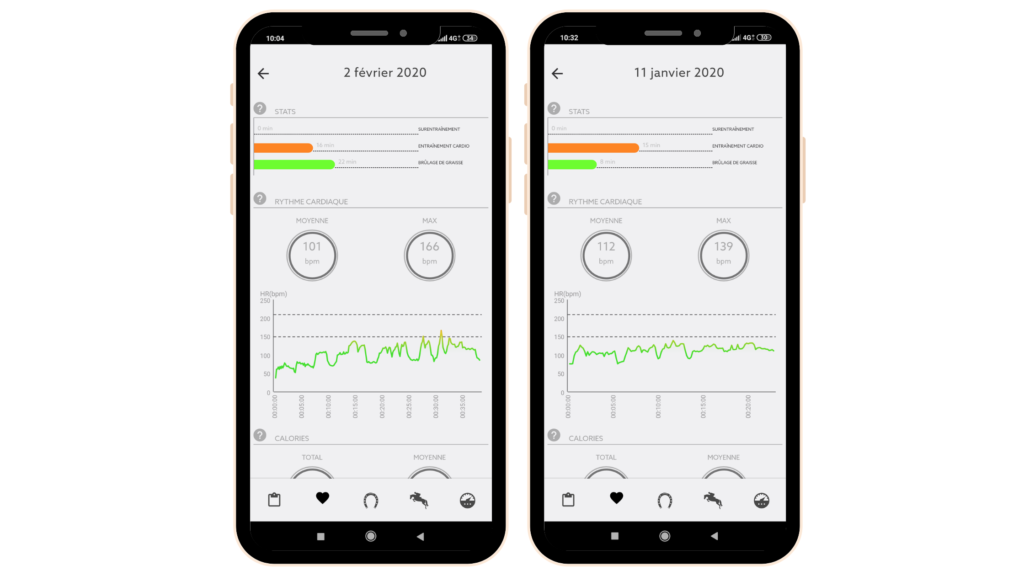Thursday, July 2, 2020
Excessive sex hormones are very common in mares, affecting their morale as much as their physique. This can lead to mood swings, colic and muscle tension in the neck, back and lumbar region. At this point, owners often feel that their mare is no longer listening to them. Sometimes, added to this, work-induced stress or intense emotion can be enough to trigger a blood attack.
Discover in this article the case of an inconstant mare and solutions to relieve her of her tensions.
The following article was written by Dr. Eva Jonville. For a better understanding of its meaning, the paragraph below explains how she carries out her consultations:
"Acupuncture is part of my primary approach and plays a central role in my consultations. These are based on Traditional Chinese Medicine. Then I use osteopathy or manual medicine, in a synergistic and complementary way. This is useful for removing musculoskeletal structural fixations when necessary.
Lastly, depending on the disorders encountered, after an induction session using acupuncture needles, I can suggest a course of treatment using Chinese pharmacopoeia. This prolongs the effects of the needles over time, avoiding the need for frequent consultations.

Diagnosis is therefore carried out and refined according to 3 reading grids:
The joint use of all these techniques potentiates each other for maximum results. The aim is to offer horses an integrative medicine that ensures complete, complementary and coherent care.
That said, there's no such thing as a typical consultation. Each horse guides me towards its own needs, which I limit so as not to upset the balance or dynamics in place. It's all about being succinct and precise in the choice of information given to the body and the technique(s) employed.
This means that the choice of treatment method is based on a precise individualized diagnosis and in-depth knowledge of therapeutic techniques. All of this is crowned by a continually nourished and enriched experience."
Luna is a nervous, muscular 5-year-old Iberian mare. She's a complicated mare, especially in spring when she's in heat and in autumn when her ovarian cycles are still going on. At these times, she hates to be touched. When mounted, she sticks to your leg, flicks her tail and resists lowering her hips. Since she's usually supple, when she resists like this, the owner persists in her demands. She thinks it's just a matter of getting her to yield by overcoming her excessive mare-like behavior.
The aftermath of these sessions is hard: the mare engages less well, lacks strength in the hindquarters, resists, gets angry... This is when the vicious circle begins.
Since the end of this springtime confinement, these problems have become more acute, and the owner is even afraid of bloodshed, as Luna already had on returning from vacation 2 years ago. Her mare is getting stiffer and stiffer, despite all the work she's been doing. This disorients her, and she's afraid to let her rest for fear of bloodstroke when she returns.

Luna is a hormonal mare: her ovaries are over-stimulated by hypothalamic-pituitary hormones, in particular GnRH, causingmood swings and muscle tension. In Chinese medicine, this is explained by liver overload (the liver metabolizes excess sex and steroid hormones, especially in spring), resulting in poor muscle oxygenation.
In traditional Chinese medicine, the liver "moves the blood". When the liver's energy is blocked, this function is no longer ensured: excess energy rises to the head, the horse sees red, becomes angry, and the muscles stop breathing. They then produce lactic acid, which accumulates, generating muscle aches and pains. Tensions appear, particularly in the psoas muscles, which are very powerful and extremely solicited, and in the lumbar region due to over-stimulation of the ovaries. Contractures, which make muscle oxygenation less and less efficient, self-amplify this pain... to the point of bloodletting or "ovarian" colic.

Diagram: the female sex hormone cycle in the follicular growth phase, before ovulation, when the mare's susceptibility is at its highest. Steroid hormones are catabolized into metabolites in the liver.These degradation products are then excreted in the urine.An excess of steroid hormones can saturate the liver and kidneys.
Once again,acupuncture is of great help in regulating the hormonal sphere and ovarian activity, as is pharmacopoeia for draining the liver and muscles.
When it comes to working with mares, it's very important toavoid "conflictual" situations in which the mare stresses, resists, contracts and defends herself. That's why you need to be patient and "psychological", so that the mare can join forces with her rider and carry out what is expected of her with serenity, if not complicity. The rider must remain calm and reassuring, even if determined. To help muscles recover through breathing, it's very important to walk for a long time after work sessions. This will drain lactic acid, if it has been formed in excess during a stressful period.
Knowing how to spot the early signs of heat, when mares are particularly tense, sensitive, delicate and reactive, is important; these are critical moments during which the rider must show more patience and kindness than demandingness.
In the case of an ovarian mare, Seaver technology can be used to detect stress or discomfort by measuring heart rate, thus alerting the rider to any abnormal readings. A horse's heart rate at rest is between 30 and 45 beats per minute. When working, it can reach up to 240 beats per minute. Of course, these figures may vary slightly depending on your horse and the discipline practised.

However, when a cardiac peak is observed during a session, it may indicate pain or discomfort in the horse that needs to be analyzed afterwards. "Did this cardiac peak occur during a request for a trot or canter start?" "Did this cardiac peak occur during a request to lower the hips at a specific moment in the session?" It is necessary to correlate the occurrence of cardiac peaks with the work performed in order to identify the key moments when the discomfort occurred so as toadapt one's work and these requests afterwards.

We hope you enjoyed this article,
See you soon for another article,
Dr Eva Jonville